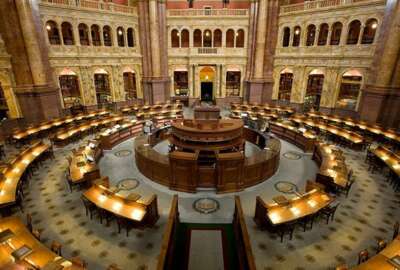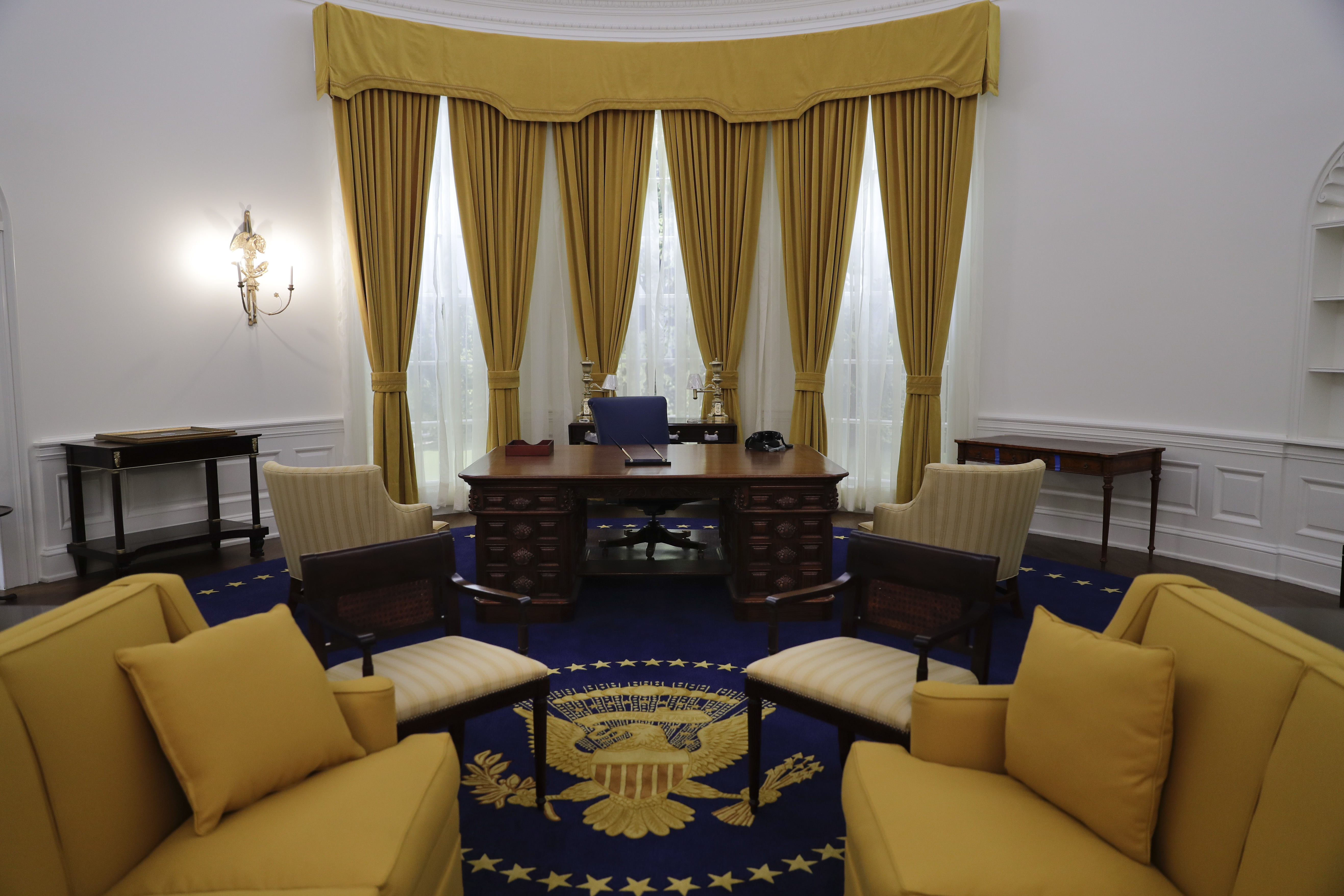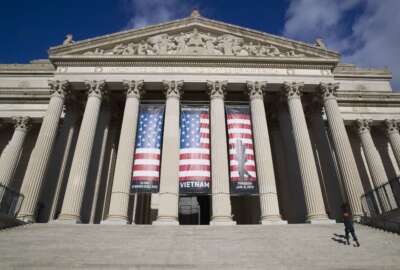Meet the new director of the George H. W. Bush Presidential Library
The George H. W. Bush Presidential Library and Museum now has a new director for the first time in 20 years.
He served only one term as POTUS, but he served the nation in one capacity or another for a lifetime. The George H. W. Bush Presidential Library and Museum now has a new director for the first time in 20 years. The Federal Drive with Tom Temin spoke with Dawn Hammatt.
Interview Transcript:
Tom Temin And you have been at that museum just a few weeks, having come from the Eisenhower Museum in Kansas. So, are you a presidential historian? Are you a librarian, or how would you describe yourself?
Dawn Hammatt I am a museum professional. I am enthralled with the idea of taking scholarship of others and using that information and the holdings of the library to create interactive experiences in the public history realm for the general public.
Tom Temin And at a library like that, I mean, even to this day, there are still scholarship going on. I mean, heck, there’s still scholarship going on about George Washington, much less more recent presidents. So how much of the activity is devoted to enabling scholars that may want to actually view original documents, you know, and be in a room like that versus those that? No, I remember George H.W. Bush. He’s the guy that didn’t like broccoli visitors.
Dawn Hammatt I was listening to that talk just the other day. Actually, one of our main mandates from Congress is to have these documents of our nation available to people who need and want to view them. So, each one of the presidential libraries that are under the National Archives and Records Administration have a research room where scholars, researchers can go directly interact with the documents of our government and come to their own conclusions about the things that occurred. And the reason that scholarship is still going on is we have different people who are going through the documents and finding different nuggets of information and synthesizing that in different ways.
Tom Temin And what’s the criteria for someone who wants to come in there? Do they have to be a recognized David McCullough type of historian? Or if someone’s doing, say, a thesis for a college course, would they also be able to come in?
Dawn Hammatt That’s a great question. And the answer is anyone. You have to go through our orientation so that you learn how to interact with the documents. We are mandated to preserve these documents in perpetuity, and therefore everyone has to interact with them in a certain way. So, after you go through the orientation, anyone is allowed to use this. In fact, we have high school students, we have college students, and we have filmmakers and, you know, nationally recognized scholars who all use the holdings.
Tom Temin It must give you some satisfaction to see people’s satisfaction with touching actual documents that are really tangible pieces of U.S. history.
Dawn Hammatt It’s an amazing moment when people realize that they can, and perhaps are touching the actual document rather than some facsimile or, you know, some scan of it. In fact, you mentioned that this is sort of an American rite. Perhaps we had at the Eisenhower several months ago. We had a scholar from Hungary who was using the holdings there, and he mentioned more often than I can tell you that he doesn’t have access to his government records, and he had to come to the United States to get access to his government’s records. So, it’s really an amazing thing that we have that we can do this. And the National Archives. This is one of our main foci. So, it’s great.
Tom Temin And give us a sense of the extent of the complex that you oversee. There’s a museum, there’s a library, there’s holding rooms. Tell us about that. And the staffing required to keep it going.
Dawn Hammatt Sure. The holdings are about 40, 45 million documents. We also have, photographs and film footage and all of those additional types of data. And then we have the reading room where people can come to do research. Additionally, we have a museum, and the museum is open seven days a week for the general public. Additionally, this is on the campus of Texas A&M, and the president chose to have the library located here. He and his wife are also buried on campus grounds nearby on this site. And another component of his desire was to have the Bush school also here. So, we have this President Bush campus, so to speak, within the A&M campus with other components of President Bush’s life.
Tom Temin We’re speaking with Dawn Hammatt. She’s director of the George H.W. Bush Presidential Library and Museum in College Station, Texas, on that A&M campus. And what is the day-to-day life for the director of these complexes?
Dawn Hammatt I think one of the things that I really love about my job is there is no sort of general day. Things change in the. You are talking to scholars who need some assistance. You’re going over exhibit design plans and making some final decisions and approvals on those sorts of things. And that’s what I love about my job is that there’s just so much variety and what it is we do.
Tom Temin And do. New documents come in whether, say, at the Eisenhower or to the Bush or any of them, because there is this constant statutory declassification process that happens. And when those documents are released, do they go to the presidential library, or do you get copies of them? How does that work?
Dawn Hammatt For Eisenhower, it’s a little bit different because Eisenhower was established before the Presidential Records Act. So, Eisenhower’s Library is considered a deed of gift library. The classified documents all go through the same program, where once they’re declassified, they do return to the library and are available for scholars. But the Bush Presidential Library is post the Presidential Records Act. And so, our laws regulating the documents are a little bit different. We’re subject to the Freedom of Information Act as well. And all of those laws really regulate how we provide access to some of our documents.
Tom Temin But you do get the classified ones as they become declassified. They go to the libraries.
Dawn Hammatt That is correct.
Tom Temin Therefore, it’s fair to say, and you tell us that these libraries are not simply like a wasp enclosed in amber, you know, fixed for all time, but they’re kind of living in the sense that there’s always something new to be discovered, even for presidents that have been out of office a while.
Dawn Hammatt Well, that’s exactly true. And additionally, we can accept donations from the public. So, if you have anything that you think fits into the life and the holdings of one of the presidents, the presidential library may be interested in accepting that because we also have three dimensional objects. It’s not just federal document records, it’s other things as well. So yeah, we have we’re getting, new donations all the time.
Tom Temin And presidents get gifts from other heads of state. And of course, they’re not allowed to keep them personally, you know, swords from potentates and all these kinds of things. Where do those mostly end up?
Dawn Hammatt So those are with the National Archives and then therefore the presidential library. Yes. So, the gifts of state do come to the libraries.
Tom Temin And from your personal standpoint, what do you like the most? What exhibit, what item fascinates you the most at that library?
Dawn Hammatt That’s a tough question because everything so new and interesting to me right now. I think that President Bush’s military service during World War II is fascinating to me right now, coming from Eisenhower and really understanding, World War II in its totality, to have President Bush’s service at that time period as well, really sort of spoke to me in my knowledge that I, that I already had. What’s new and interesting to me is President Bush’s support and validation of public service and public servants. What I’m learning now is all of the ways that he encouraged us to support our communities in different ways.
Tom Temin Wow. And what else do we need to know?
Dawn Hammatt Well, we have some big things coming up in June. Actually, this June will be the president’s 100th birthday. And, along with the George and Barbara Bush Foundation, we are working on several days of activities, several days of celebration. And so, I would encourage everybody to keep their eyes on the websites, both the Bush Foundation and the Bush Library, to see about the programs that are coming up in June. It’s going to be amazing, and we’re really excited about it.
Copyright © 2024 Federal News Network. All rights reserved. This website is not intended for users located within the European Economic Area.
Tom Temin is host of the Federal Drive and has been providing insight on federal technology and management issues for more than 30 years.
Follow @tteminWFED






